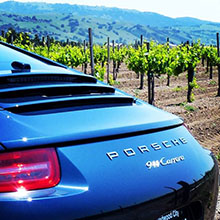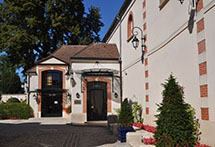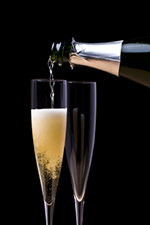|
| |
| Recent Labels |
| |
| Non-Vintage |
| |
| Nicholas Francois Billecart |
|
|
|
|
| |
| |
| |
Billecart-Salmon Extra Brut Champagne
Billecart-Salmon Extra Brut is a non-vintage champagne that is obviously dry (with zero dosage) but balanced and rich. Billecart-Salmon Extra Brut ratings are available along with it's characteristics.
| Billecart-Salmon Extra Brut |
| Type |
|
|
|
|
| Category: |
Basic |
Prestige Cuvée: |
No |
|
| |
| Ratings (on a scale of 100) |
|
|
|
|
| Champagne 411 |
90 |
Dec. 2013 |
|
Average Retail Price |
| Wine Enthusiast |
91 |
12/01/12 |
|
(750 ml bottle) $60 |
| Wine Spectator |
90 |
10/31/13 |
|
|
|
|
|
|
|
|
Tasting Notes
Appearance: Pale gold with very fine steady bead.
Aroma/bouquet: Apple,ginger, raw almond, very subtle yeasty notes.
Palate: Lemon, apple, some bread dough with fresh minerality.
Additional comments: Obviously dry (with zero dosage) but balanced and rich.
When to drink: Billecart-Salmon Extra Brut Champagne is ready to drink at release but may benefit from one to five years of aging.
| Extra Brut Details
Label: Billecart-Salmon Extra Brut
House/Winery: Champagne Billecart-Salmon
Wine Category: Sparkling Wine
Region & Country: Champagne, France
Type (Style): Non-vintage
Sweetness Level: Extra Brut
Dosage: na
Prestige cuvée: No
Vineyards: NA
Grapes: 40% Pinot Meunier, 35% Pinot Noir, 25% Chardonnay
Alcohol: 12%
Go to Champagne Details for a description of the above types, characteristics, and grapes. |
Billecart-Salmon Extra Brut
Production
Billecart-Salmon uses the méthode champenoise for their champagne production. Like the Brut Reserve, the Extra Brut is composed of 40% Pinot Meunier, 35% Pinot Noir and 25% Chardonnay, but no sugar is added in the dosage. Aging is typically an extra year longer than most of Billecart-Salmon's other non-vintage champagne (approximately 4 years) on the lees. The closure for Billecart-Salmon Brut Reserve is DIAM instead of natural cork. DIAM is 'technical' cork made by combining tiny granules of cleaned natural cork with synthetic microspheres. It minimizes faults such as TCA ('corked wine') that can occur with natural cork.
Billecart-Salmon uses a winemaking technique called double debourbage. Solids settle to clarify fresh juice, then a second 'cold' settling occurs at about 40 degrees F for at least 48 hours after pressing. This process ensures the purity of the juice prior to fermentation. The fermentation process typically takes place over a minimum of 3 weeks at a temperature not to exceed 57 degrees Fahrenheit, longer than the typical fermentation at most houses of 1 week at about 68 degrees F. |




